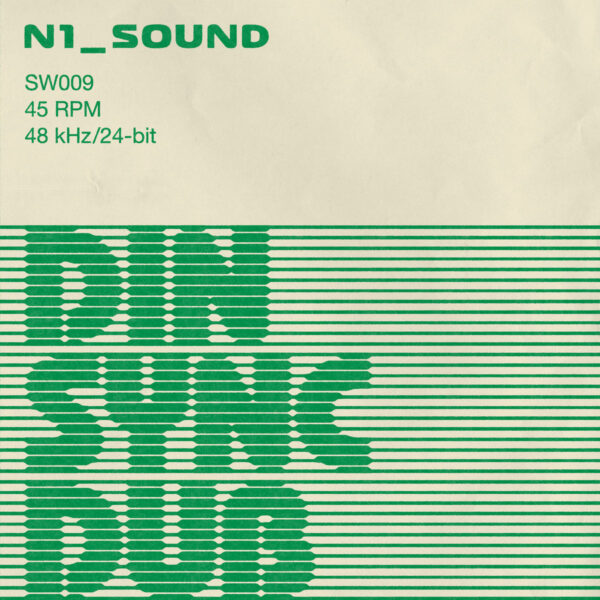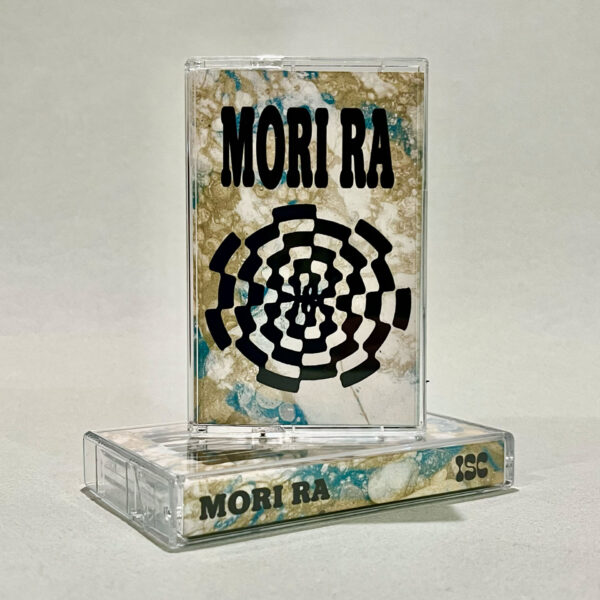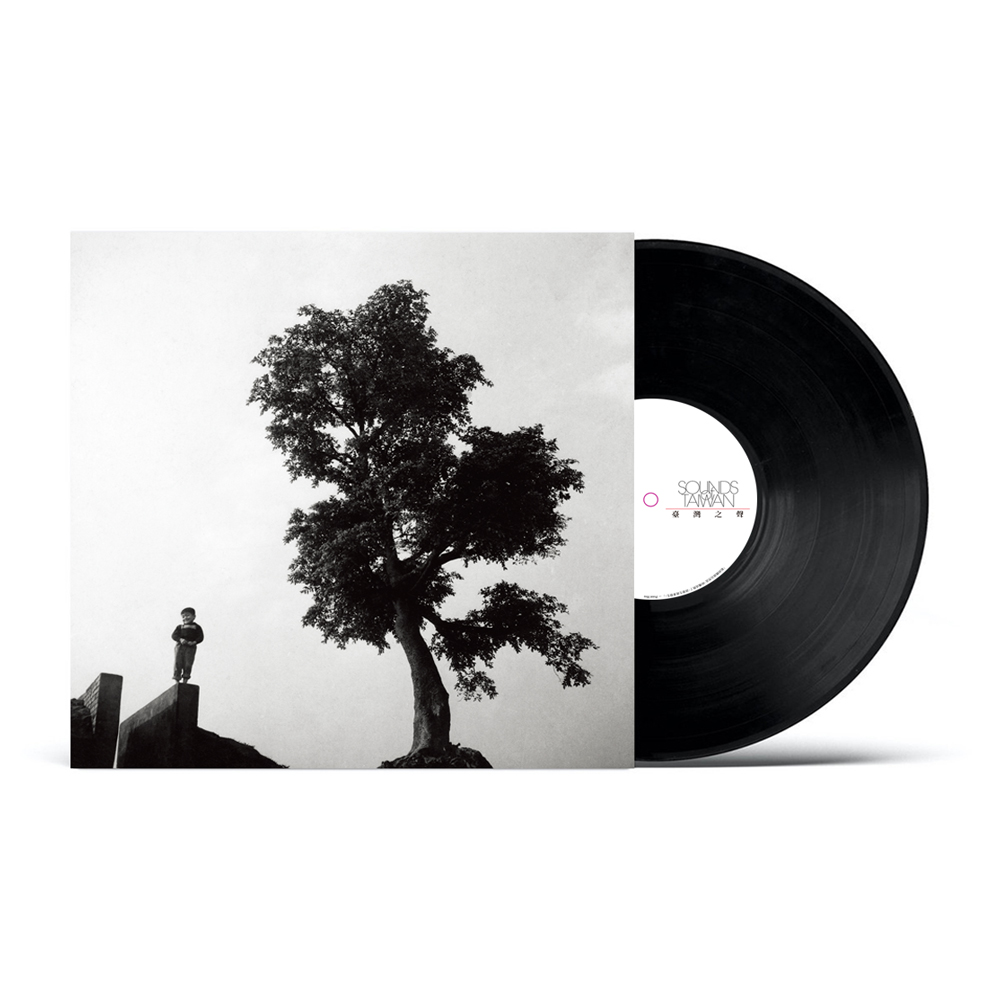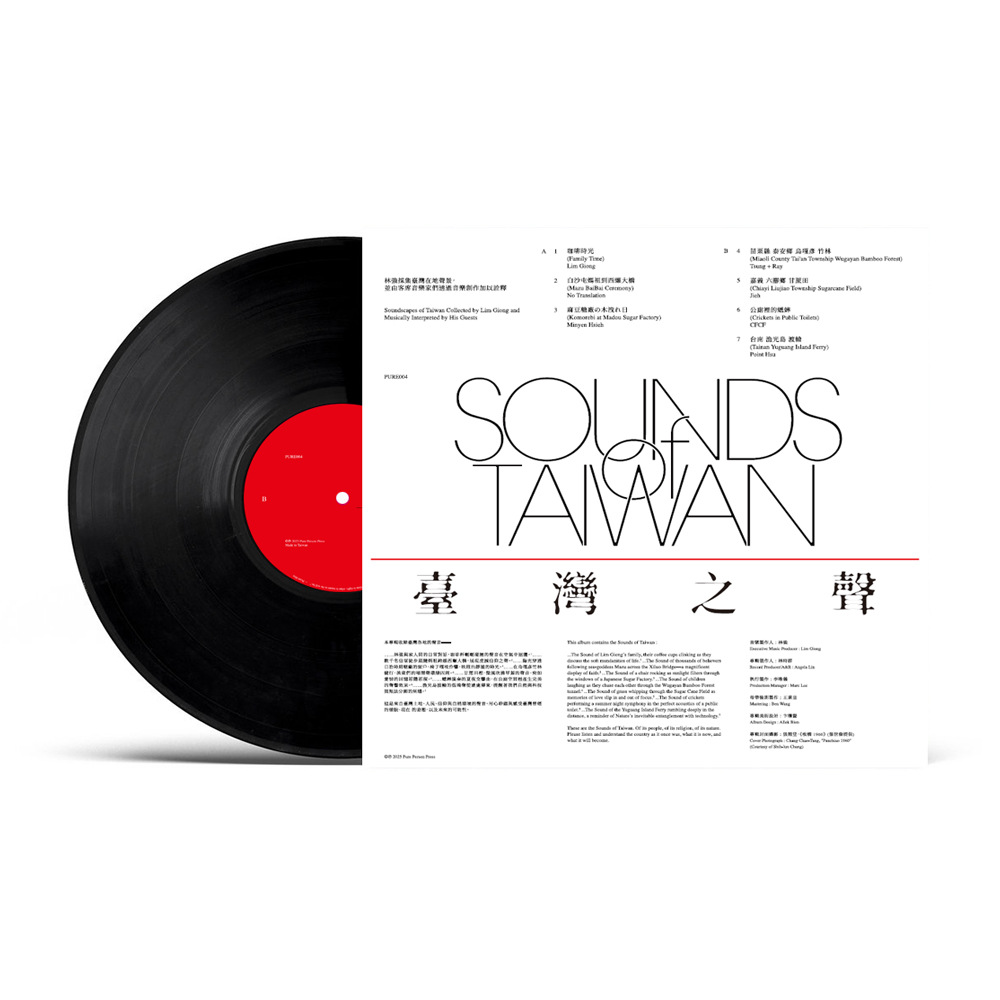
Lim Giong + Guests – Sounds of Taiwan LP

Tracklist
1. Lim Giong – 咖啡時光 (Family Time)
2. No Translation – 白沙屯媽祖到西螺大橋 (Baishatun Mazu to Xiluo Bridge)
3. Minyen Hsieh 謝明諺 – 麻豆糖廠の木洩れ日 (Komorebi at Madou Sugar Factory)
4. Tsung + Ray – 苗栗縣 泰安鄉 烏嘎彥 竹林 (Miaoli County Tai’an Township Wugayan Bamboo Forest)
5. Jieh – 嘉義 六腳鄉 甘蔗田 (Chiayi Liujiao Township Sugarcane Field)
6. CFCF – 公廁裡的蟋蟀 (Crickets in Public Toilets)
7. Point Hsu – 台南 漁光島 渡輪 (Tainan Yuguang Island Ferry)
Executive Music Producer
音樂製作人: Lim Giong / 林強
Record Producer/A&R
專輯製作人: Angela Lin / 林時群
Production Manager
執行製作: Marc Lee (Deep Sound) /
Mastering: Ben Wang
母帶後期製作: 王秉皇
Album Design
Allek Bien
Album Photograph
Chang Chao-Tang, “Panchiao, Taiwan, 1960” (Courtesy of Shih-lun Chang)
Description
Ships early November
Sounds of Taiwan is an eco-musical project four years in the making. By inviting artists to reinterpret Lim Giong’s personal field recordings, the album offers an emotional portrait of Taiwan’s people, landscapes, and spirituality.
This album is deeply personal, offering an intimate portrait of Taiwan through Lim’s unique lens. On “Family Time” you hear his family’s voices chatting quietly at their favorite café. Taiwanese saxophonist Minyen Hsieh reflects on Taiwan’s layered history with Japan in “Madou Sugar Factory.” Taiwanese American artist No Translation guides listeners into a dreamlike, meditative state with “Baishatun Mazu to Xiluo Bridge,” evoking the spirit of the sea goddess Mazu and her devoted followers. Together, contributions from both Taiwanese and American artists allow Sounds of Taiwan to weave a bridge between the two cultures.
Lim Giong is one of Taiwan’s most influential cultural figures. He was the first pop star to sing in the Taiwanese dialect and later became the godfather of Taiwan’s electronic and DJ culture. Beyond music, he acted in Taiwanese New Wave films and is now an acclaimed composer for directors including Hou Hsiao-Hsien, Jia Zhangke, and Bi Gan. His presence and influence shape the sound, spirit, and identity of modern Taiwan.
The album also builds on the success of Pure Person Press’s previous collaboration with Lim Giong, 2020’s A Pure Person. That project reimagined Lim’s iconic track from Hou Hsiao-Hsien’s Millennium Mambo, selling out 1,000 vinyl units in a single week and receiving coverage from outlets including MUBI and Resident Advisor. Today, copies of A Pure Person are considered cult artifacts in Taiwan, fetching hundreds of dollars on the collectors’ market.
Sounds of Taiwan is ultimately a love letter to Taiwan in its purest form. Even the album art honors the island’s visual legacy: the estate of renowned Taiwanese photographer Chang Chao Tang has graciously allowed his work to be featured as the cover image. With Sounds of Taiwan, Pure Person Press continues its mission to create meaningful music inspired by and in service to Taiwanese culture.







